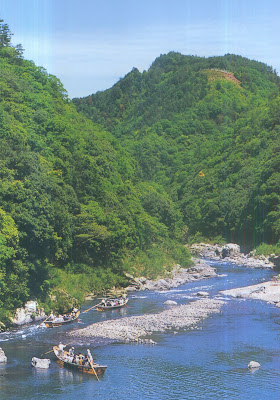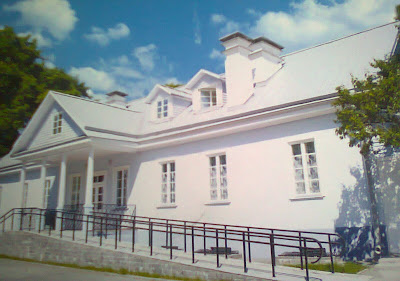The Republic of China, commonly known as „Taiwan”, is a state located in East Asia. The Republic of China - ROC - governs the island of Taiwan, which forms 99% of its current territory, as well as Penghu, Kinmen, Matsu and other minor islands. It is the oldest surviving republic in East Asia. Neighboring states include the People’s Republic of China - PRC, 160 km to the west, Japan to the northeast, and the Philippines to the south. Its capital city is Taipei.
The National Chiang Kai-shek Memorial Hall is a famous monument erected in memory of Chiang Kai-shek, former President of the Republic of China. It is located in Taipei, Republic of China (Taiwan).Chiang Kai-shek (October 31, 1887 – April 5, 1975) was a political and military leader of XX century China. He is known as Jiǎng Jièshí or Jiǎng Zhōngzhèng in Mandarin.
The monument, surrounded by a park, stands at the east end of Memorial Hall Square. The structure is framed on the north and south by the National Theater and National Concert Hall. The entire plaza is located within sight of the Presidential Office Building.
Memorial Hall is white with four sides. The octagonal roof rises 76 metres above the ground and is covered with blue glazed tiles. The blue and white colors of the building and the red colour of the flowerbeds echo the colours in the flag of the Republic of China. The octagonal shape picks up the symbolism of the number 8, a number traditionally associated in Asia with abundance and good fortune.
The construction site occupies an area of 250,000 square meters. In addition to the Chiang Kai-shek Memorial Hall, the National Opera House, and the National Concert Hall were built on the same site. The construction of the Hall fell into two phases. During the first phase, the main body of the Hall, gardens, pavilions, verandah, and other related sites were built. For the second phase, the National Opera House, National Concert Hall, and an underground parking lot were completed in 1987.
The underlying concepts of the design:
1. To express the spirit of Chinese culture
2. An innovative design in a unique and grand style
3. The utilization of modern construction technology, with emphasis on economy and practical use. The color of the blue sky and white sun symbolize freedom and equality.
Two sets of white stairs, each with 89 steps to represent Chiang’s age at the time of his death, lead to the main entrance. The main entrance features a pair of double doors, each standing 16 meters high and weighing 75 tons, that open into the main hall. A large bronze statue of Chiang Kai-shek dominates the main hall. The figure is shown smiling, seated and wearing traditional Chinese dress. Inscribed on the wall above and behind the seated figure are the Chinese characters for “Ethics, Democracy, and Science”. Inscriptions on the side walls read “The purpose of life is to improve the general life of humanity” and “The meaning of life is to create and sustain subsequent lives in the universe”. An elaborate caisson is set into the ceiling, decorated with the emblem of the Kuomintang. Representatives of the armed forces guard the main hall during its open hours. The branch of service represented changes periodically according to a rotating schedule.
The ground level of the memorial houses a library and museum documenting Chiang Kai-shek's life and career and exhibits related to Taiwan's history and development.
The Memorial Hall is built upon three stories of broad and solid foundations that symbolize „Jhung Jheng” (impartial and righteous). The octagonal roof design creates many „ren” (Man), motifs on the very top, symbolizing the “unification of Man and Heaven.” The roof is fashioned in the form of the Altar to Heaven and covered with blue glazed tiles, reflecting the sunlight. The apex of the roof is gold in color and culminates the upsurge glory None of the other materials, such as the white marble, red cypress ceiling, and light red granite floor, have been tinted with artificial colors,thereby imparting a feeling of sacredness, solemnity, hospitality, and peace.
 This postcard traveled to me for 46 days. It comes from Taiwan, and it was sent by Yi-Jheng Li.
This postcard traveled to me for 46 days. It comes from Taiwan, and it was sent by Yi-Jheng Li.
 There are 48 waterfalls in Nikko, but Kegon waterfall is the most famous among these. The water falls from
There are 48 waterfalls in Nikko, but Kegon waterfall is the most famous among these. The water falls from 































